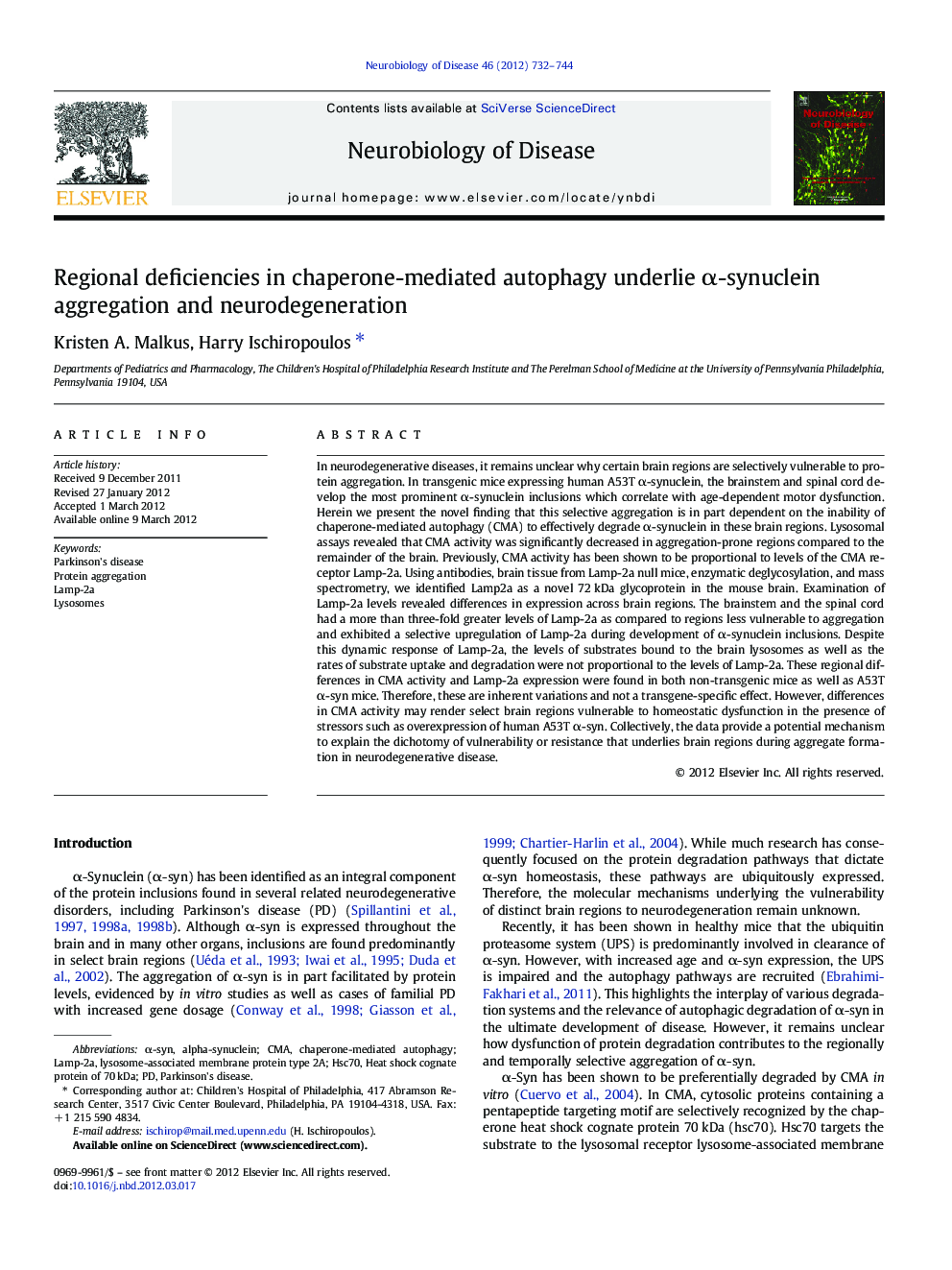| Article ID | Journal | Published Year | Pages | File Type |
|---|---|---|---|---|
| 3069531 | Neurobiology of Disease | 2012 | 13 Pages |
In neurodegenerative diseases, it remains unclear why certain brain regions are selectively vulnerable to protein aggregation. In transgenic mice expressing human A53T α-synuclein, the brainstem and spinal cord develop the most prominent α-synuclein inclusions which correlate with age-dependent motor dysfunction. Herein we present the novel finding that this selective aggregation is in part dependent on the inability of chaperone-mediated autophagy (CMA) to effectively degrade α-synuclein in these brain regions. Lysosomal assays revealed that CMA activity was significantly decreased in aggregation-prone regions compared to the remainder of the brain. Previously, CMA activity has been shown to be proportional to levels of the CMA receptor Lamp-2a. Using antibodies, brain tissue from Lamp-2a null mice, enzymatic deglycosylation, and mass spectrometry, we identified Lamp2a as a novel 72 kDa glycoprotein in the mouse brain. Examination of Lamp-2a levels revealed differences in expression across brain regions. The brainstem and the spinal cord had a more than three-fold greater levels of Lamp-2a as compared to regions less vulnerable to aggregation and exhibited a selective upregulation of Lamp-2a during development of α-synuclein inclusions. Despite this dynamic response of Lamp-2a, the levels of substrates bound to the brain lysosomes as well as the rates of substrate uptake and degradation were not proportional to the levels of Lamp-2a. These regional differences in CMA activity and Lamp-2a expression were found in both non-transgenic mice as well as A53T α-syn mice. Therefore, these are inherent variations and not a transgene-specific effect. However, differences in CMA activity may render select brain regions vulnerable to homeostatic dysfunction in the presence of stressors such as overexpression of human A53T α-syn. Collectively, the data provide a potential mechanism to explain the dichotomy of vulnerability or resistance that underlies brain regions during aggregate formation in neurodegenerative disease.
► Defects in CMA activity explain the regional selectivity of α-synuclein aggregation. ► Decreased lysosomal CMA clearance of α-synuclein in aggregate prone brain regions. ► In the brain Lamp2a is a 72 kDa glycoprotein. ► Levels of the Lamp-2a are higher in aggregate prone brain regions. ► Levels of Lamp-2a do not correlate with substrate CMA binding or degradation.
